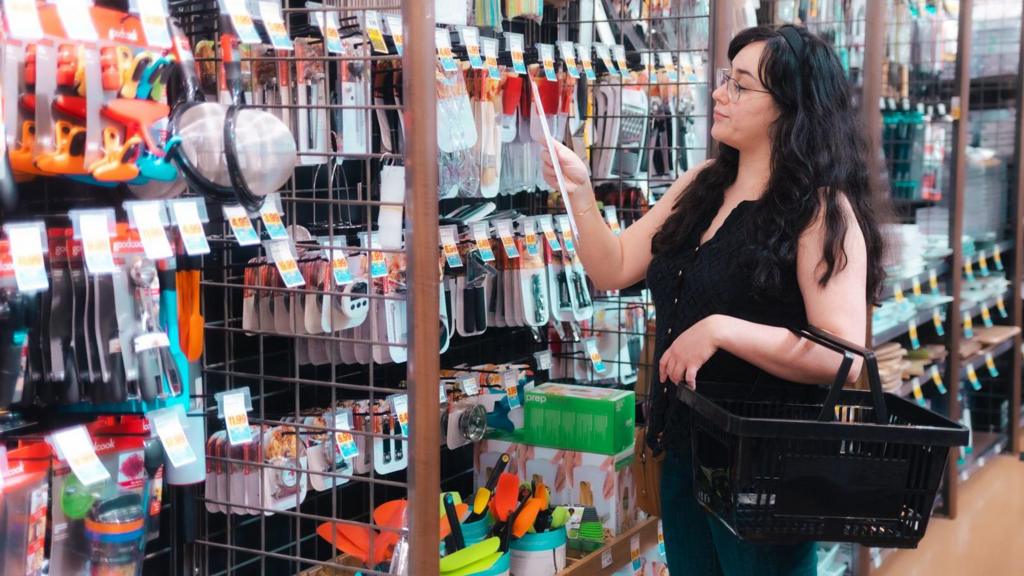“`html
U.S. inflation remained stable in July despite import tariffs, strengthening expectations that the Federal Reserve might reduce interest rates next month.
Recent official data indicated that consumer prices increased by 2.7% in the year leading up to July, mirroring June’s rate, as decreased energy expenses balanced out price increases in commodities like coffee, tomatoes, and tools.
Analysts suggested the relatively moderate rate of price increases could reinforce the U.S. central bank’s justification for lowering borrowing costs to bolster the economy amid slowing job growth.
However, an underlying inflation measure, considered a more reliable indicator of economic trends, revealed prices rising at their fastest pace since February.
Core inflation, excluding food and energy costs, rose by 3.1%, marking the most rapid increase in six months, according to Tuesday’s data.
Seema Shah, chief global strategist at Principal Asset Management, expressed her continued expectation for the Federal Reserve to decrease borrowing costs in September to stimulate the U.S. economy.
“There is some sign of tariff pass through to consumer prices but, at this stage, it is not significant enough to ring alarm bells,” she said.
However, she cautioned that the decision could become more complex in the coming months as firms begin to deplete their stocks of goods imported before the tariffs were implemented.
The U.S. Federal Reserve aims for an inflation rate of 2%.
Given the rate exceeding its target, the Fed has maintained interest rates this year, despite President Donald Trump’s pressure to lower borrowing costs, due to concerns that tariffs, acting as taxes on imports, could accelerate price increases.
Trump has dismissed concerns that the measures will drive up prices or weigh on the economy.
He recently fired Erika McEntarfer, head of the Bureau of Labor Statistics after the agency – which also compiled the inflation figures – reported weaker-than expected jobs data which provoked alarm about the president’s tariff policy.
On Tuesday, he reiterated his call for interest rates to fall and renewed threats against Jerome Powell, the central bank’s chair.
The president threatened to “allow” a “major lawsuit” to go ahead against Mr Powell linked to a refurbishment of Federal Reserve properties.
“Jerome “Too Late” Powell must NOW lower the rate,” Trump wrote on social media.
The Fed was established by Congress and has powers to set policy independent of the White House.
Lindsay James, investment strategist at Quilter, described the latest inflation data as “messy,” presenting figures supporting both sides of the debate regarding whether tariffs will lead to a significant increase in prices.
The report indicated price increases from June to July for typically imported items such as tomatoes, which rose 3.3%, and coffee, up 2.3%.
Over the same one-month period, prices for rugs and curtains climbed 1.2%, while tools and hardware rose 1.6%.
However, many factors driving up inflation were in categories not directly affected by tariffs.
The price of air fares, for example, jumped 4% in the year to July while dental services rose 2.6%.
The price of clothing, one of the categories expected to be hardest hit from the new measures, rose just 0.1% over the month, cooling from June.
“In the short-term, markets will likely embrace these numbers because they should allow the Fed to focus on labor-market weakness and keep a September rate cut on the table,” said Ellen Zentner, chief economic strategist for Morgan Stanley Wealth Management.
“Longer-term, we likely haven’t seen the end of rising prices as tariffs continue to work their way through the economy,” she added.
The average tariff rate in the U.S. has surged this year, with a minimum tax of 10% in place for most goods since April and certain items, such as cars, hit with higher duties.
Since the latest measures went into effect this month, most goods entering the U.S. are facing taxes of between 10% and 50%, depending on their origin.
Trump has, however, exempted key items including most imports from Canada and Mexico as well as other categories such as oil and smartphones.
Primary school uniforms cost parents, on average, more than £300 a year, government figures show.
Pathfinder is a spin-off to the main food bank that aims to support people beyond stocking cupboards.
A charity has claimed about one in three parents are struggling with school uniform costs.
A campaign group warns private rents could rise as thousands of workers move in to a town.
The Great Big Hornsea Uniform Swap was held at East Riding Leisure Hornsea.
“`

